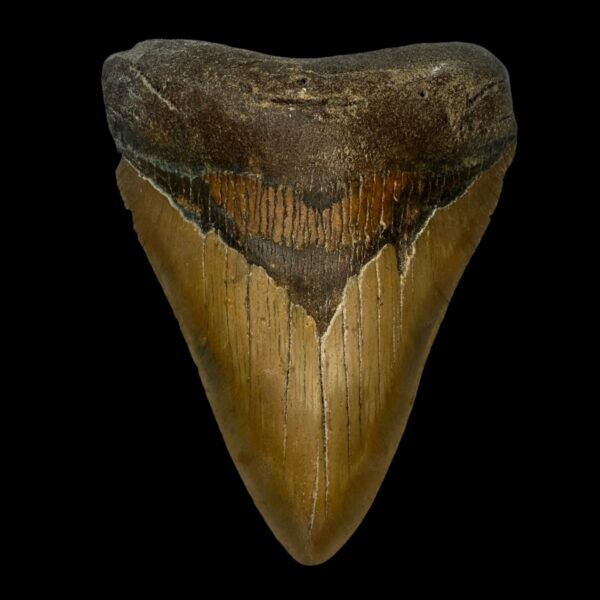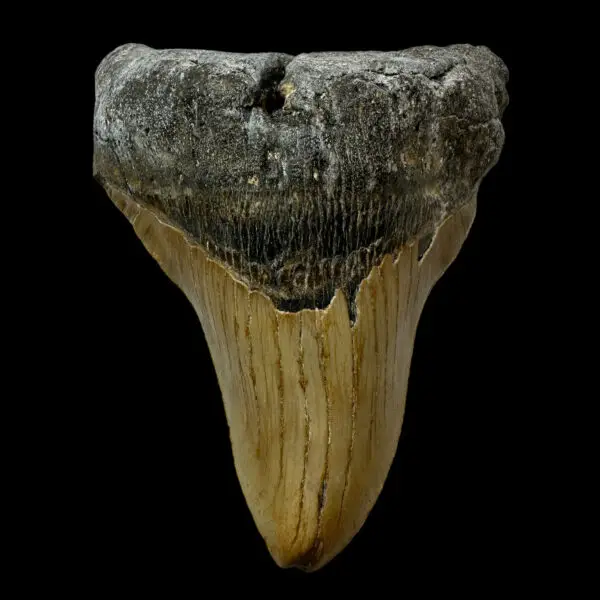Uncover 5 Incredible Discoveries About Fossil Sharks: From Ancient Seas to Modern Collectors
Sharks have ruled the oceans for over 400 million years, leaving behind a rich record of fossil sharks that provides a unique insight into evolution, predation, and marine ecosystems. From massive Megalodons to the ancestors of modern Great White sharks, fossil sharks allow scientists and collectors alike to explore the mysteries of prehistoric seas. Each fossil shark tooth preserves millions of years of history, capturing the anatomy, behavior, and environment of these ancient predators.
Fossil sharks are not only valuable scientifically but also aesthetically. Their size, serrations, and coloration make them highly sought after in private collections and museums. Understanding fossil sharks helps paleontologists reconstruct marine ecosystems, track evolutionary trends, and identify predator-prey relationships in ancient oceans.
Discovery #1: Megalodon Teeth Reveal Apex Predator Power
The Megalodon, scientifically known as Otodus megalodon, was the largest shark to ever exist. Teeth from these fossil sharks can exceed seven inches, demonstrating the incredible size and strength of this predator. Megalodon fossils are found primarily in Miocene and Pliocene deposits, dating from 23 to 3.6 million years ago.
Each fossil shark tooth from Megalodon shows deep serrations and thick enamel, indicating its ability to hunt large marine mammals like whales. The curvature and wear patterns on teeth also provide insights into feeding behavior. For collectors, a well-preserved Megalodon tooth is a centerpiece due to its rarity and dramatic presence, while scientists use these fossil sharks to understand the predator dynamics of prehistoric oceans.
Discovery #2: Great White Ancestors and Fossil Sharks
Modern Great White sharks evolved from ancient species that lived alongside Megalodon. Fossils of these sharks, particularly teeth, reveal evolutionary adaptations in serrations, shape, and size. Studying these fossil sharks helps scientists trace how traits like tooth morphology and jaw structure changed over millions of years.
Great White ancestors’ fossil teeth are generally smaller and narrower than Megalodon teeth but still carry detailed serrations. These fossil sharks show adaptation to prey availability and environmental changes, providing a comparative study for modern shark species. Collectors often appreciate these fossil sharks for their accessibility while still offering a tangible connection to ancient oceans.
Discovery #3: Unique Tooth Sizes in Fossil Sharks
The size of fossil shark teeth often indicates age and dominance of the individual shark. Large teeth suggest adult apex predators, while smaller teeth may come from juveniles or less dominant species. Tooth size affects both scientific value and collector appeal.
Collectors value fossil sharks not just for size but also for serration quality, enamel preservation, and authenticity. A 4-inch Megalodon tooth may be highly desirable if its serrations are intact and enamel is well-preserved, illustrating how size alone is not the only factor determining importance.
Discovery #4: Fossil Shark Preservation and Enamel Patterns
The preservation of fossil sharks varies depending on sediment type, mineral content, and burial environment. Fossil teeth can retain enamel, color patterns, and patina for millions of years. The natural coloration and mineralization provide collectors and scientists with information about the fossilization process and environmental conditions.
Properly preserved fossil sharks maintain their serrations, enamel, and structural integrity. Cleaning methods remove marine deposits without damaging the natural features, ensuring each fossil shark remains a scientifically valuable and visually impressive specimen.
Discovery #5: Collectors’ Insights – Why Fossil Sharks Are Prized
Collectors prize fossil sharks for several reasons: rarity, aesthetics, and educational value. Megalodon teeth often become centerpiece items due to their massive size and impressive serrations. Smaller fossil sharks provide a more accessible entry point for new collectors while still maintaining historical significance.
Authenticity is key. Genuine fossil sharks should display natural enamel, coloration, and wear patterns without repairs or restorations. Knowledgeable collectors value specimens that are both scientifically accurate and visually appealing, creating a direct connection to prehistoric oceans and the predators that dominated them.
Conclusion: The Lasting Legacy of Fossil Sharks
Exploring these five incredible discoveries about fossil sharks allows enthusiasts, collectors, and scientists to appreciate their rarity, beauty, and scientific importance. From Megalodon to modern shark ancestors, every fossil shark tooth provides a tangible link to prehistoric oceans. Proper preservation, careful study, and responsible collecting ensure that these ancient predators remain a lasting treasure, bridging science, history, and the thrill of discovery.
Fossil sharks are not just artifacts—they are pieces of living history, telling the story of marine life millions of years ago. Each fossil shark tooth adds depth to our understanding of evolution, predator-prey relationships, and the mysteries of the prehistoric seas. Collectors who acquire these incredible specimens hold a piece of the ocean’s past in their hands, a reminder of the scale, power, and beauty of prehistoric marine predators.
Complementary Content: Incredible Insights About Fossil Sharks
Fossil sharks provide an incredible window into the oceans of the past, offering both scientific knowledge and collectible value. Beyond the iconic Megalodon and Great White ancestors, numerous extinct species of fossil sharks help us understand the incredible diversity and evolution of prehistoric marine life. Collectors and scientists alike treasure fossil sharks for the incredible history and information they preserve.
Ancient Shark Species Beyond Megalodon
While Megalodon dominates popular imagination, the oceans of the Miocene and Oligocene epochs were home to a variety of shark species. Fossils of fossil sharks, including Otodus obliquus, Carcharocles angustidens, and other extinct predators, provide incredible insights into ancient marine ecosystems. These fossil sharks help researchers trace evolutionary trends, understand predator-prey interactions, and analyze the distribution of species across prehistoric seas.
Formation of Fossil Sharks
Most fossil sharks found today are teeth, as shark skeletons are primarily cartilaginous and rarely fossilize. Fossil shark teeth are composed of highly durable enamel, which preserves serrations, shape, and coloration over millions of years. Collectors value fossil sharks not only for their scientific significance but also for their incredible aesthetic appeal. Proper fossilization ensures that these teeth remain authentic, collectible fossil sharks for generations.
Fossil Shark Tooth Sizes and Shapes
The size and shape of fossil sharks reveal much about their biology. Large Megalodon teeth, a prime example of fossil sharks, indicate apex predators capable of hunting large marine mammals. In contrast, smaller fossil sharks, including ancestors of modern Great Whites, have narrow teeth suited to smaller prey. Understanding the variation in fossil sharks teeth helps collectors, educators, and paleontologists alike appreciate their incredible historical significance.
Preservation and Display of Fossil Sharks
Collectors who handle fossil sharks know that proper cleaning is essential. Preserving serrations, enamel, and coloration maintains the scientific value and incredible visual appeal of fossil sharks. Displaying these fossil sharks in cases, alongside comparative specimens, allows enthusiasts to showcase evolutionary changes and prehistoric diversity. Fossil sharks with natural patina and well-preserved features are especially prized.
Scientific and Educational Importance
Each specimen of fossil sharks provides incredible data for paleontologists studying marine ecosystems, predator-prey dynamics, and evolutionary history. Fossil sharks allow researchers to estimate size, feeding strategies, and habitat preferences of extinct species. Educators use fossil sharks to teach about evolution, marine biology, and prehistoric ocean life, making these fossils both scientifically invaluable and educationally incredible.
Collecting Fossil Sharks Responsibly
Not all teeth labeled as fossil sharks are authentic. Collectors must verify provenance, serration preservation, enamel quality, and overall condition. Genuine fossil sharks provide a tangible connection to prehistoric oceans and offer incredible educational and aesthetic value. Learning to differentiate authentic fossil sharks from replicas ensures a reliable and valuable collection.
Fossil Sharks as a Window to Ancient Oceans
Every fossil shark represents millions of years of oceanic history. Fossil sharks capture evolutionary milestones, ecological changes, and predator-prey relationships. By studying and collecting fossil sharks, enthusiasts can appreciate the incredible power, diversity, and survival strategies of ancient sharks. Each fossil shark tooth becomes a tangible piece of marine history, offering insight, beauty, and collectible value.






